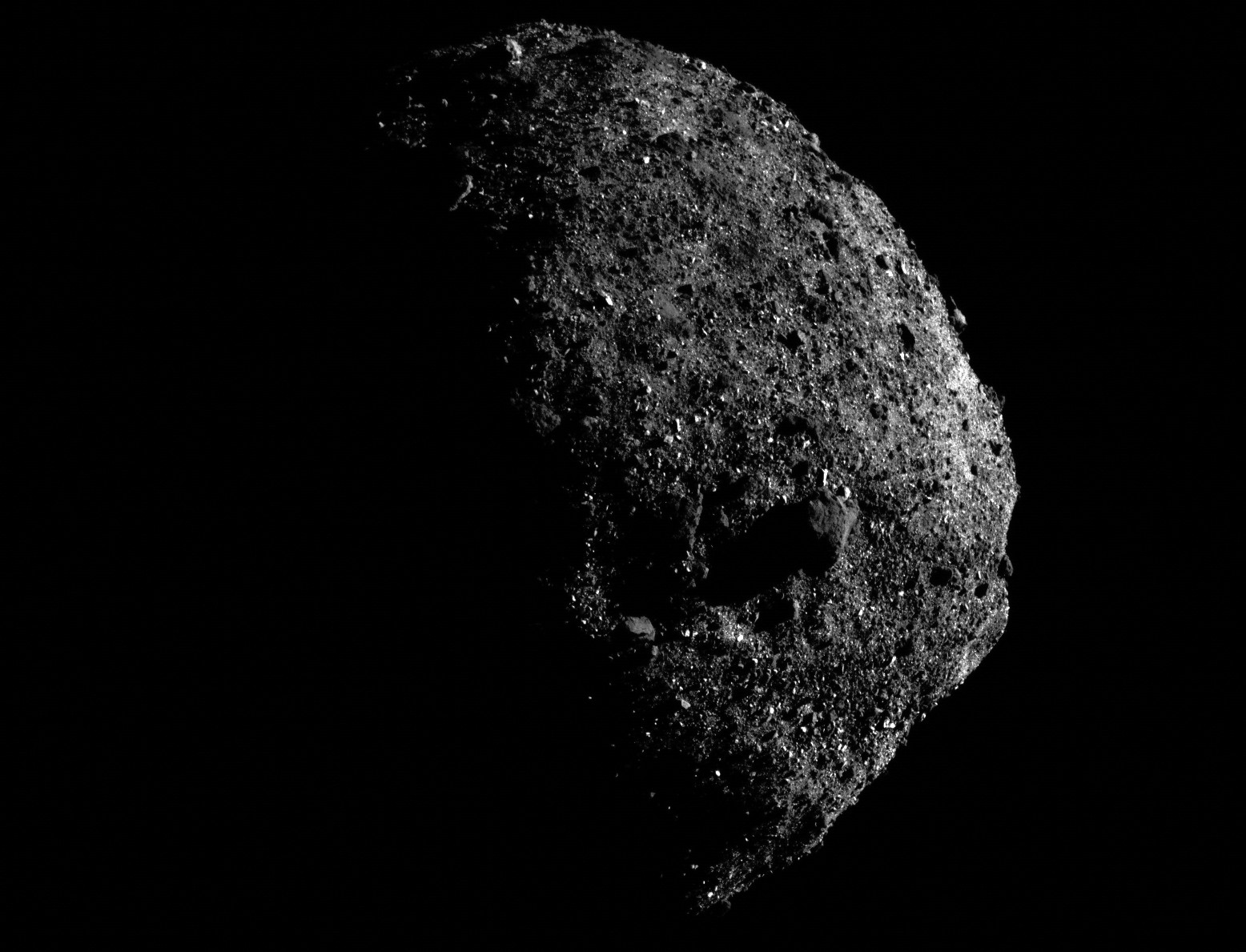Based on data from the Osiris-Rex probe, NASA recently assessed the likelihood that the asteroid Bennu, which is on the podium of the US agency's Sentry risk table, may one day strike Earth.
Seven months after landing on the asteroid Bennu to collect samples, the OSIRIS-REx probe began its return journey last May, with in his luggage a precious cargo likely to enlighten us on the formation of the Solar System. However, Bennu is also interesting for another reason:the trajectory of this object as large as the Empire State Building could one day lead it to cross our planet. In the event of impact, the estimated kinetic energy would be 1,200 megatons , which is about 80,000 times greater than the energy of the bomb dropped on Hiroshima .
As soon as it was discovered in 1999, researchers realized that it could represent a danger. But what are the odds of such an encounter?
To find out, NASA naturally approached the data from its probe that had remained around the object for more than two years. This flirtation operated more than 330 million kilometers from the Earth has indeed allowed researchers to specify the orbit of the asteroid by a factor of 20.
At a press conference on Wednesday, NASA scientists finally said there was a 1 in 1,750 chance that the object could collide with the Earth before 2300 (beyond, predictions are complicated). You got it:the probability of impact remains really low.
A priori, "everything" should be decided in 2135. In that year, Bennu will still miss Earth, but it will approach quite close, at around 200 000 km (about half the Earth-Moon distance). During this passage, Bennu could then take advantage of a gravitational slingshot, propelling it on a trajectory likely to cross that of the Earth about half a century later.

Also remember that NASA is not the alone to be interested in Bennu. Researchers from China's National Center for Space Science are also "on the spot." Moreover, whether the odds are slim or not, the country would already like to "take the lead" by diverting the trajectory of the object now.
To do this, the idea would be to send twenty-three rockets into space, each weighing 992 tons, to crash into the asteroid simultaneously. In this way, the researchers estimate that they would be able to deflect the asteroid nearly 9,000 km, enough to ward off any potential danger.